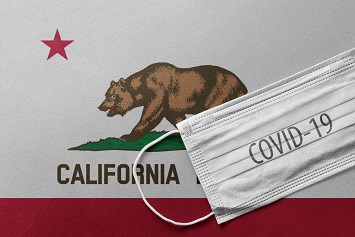California’s Occupational Safety and Health Standards Board unanimously approved five emergency temporary standards for workplace coronavirus disease 2019 (COVID-19) exposures: COVID-19 prevention, multiple COVID-19 infections and COVID-19 outbreaks, major COVID-19 outbreaks, COVID-19 prevention in employer-provided housing, and COVID-19 prevention in employer-provided transportation to and from work.
COVID-19 is a respiratory disease caused by the SARS-CoV-2 virus.
There is no federal COVID-19 or infectious disease standard, but three other states—Virginia, Michigan, and Oregon—already have established emergency COVID-19 standards. California’s rule is likely to be one of the more burdensome emergency standards, requiring employers to provide face coverings and testing for employees at an exposed workplace and protect pay and benefits.
The temporary rules will apply to all workplaces not already covered by the state’s aerosol transmissible disease (ATD) standard. The ATD standard applies to correctional and healthcare facilities and emergency services.
The board now will submit the rule text to the state Office of Administrative Law. If approved by the Office of Administrative Law in the next 10 calendar days, the emergency standards will be in effect immediately and remain in effect for 180 days. The standards board may twice readopt temporary standards for 1 additional 90-day period each.
The California Division of Occupational Safety and Health (Cal/OSHA) will enforce the standards.
Employers must have a written COVID-19 prevention plan under the emergency rules to address issues, including:
- Communicating information to employees about COVID-19 symptoms and illnesses, prevention, and testing and establishing a system for employees to report exposures without fear of retaliation;
- Identifying and evaluating COVID-19 exposure hazards and identifying workplace conditions and practices that could result in potential exposure;
- Procedures for screening employees for symptoms;
- Procedures for responding to and investigating cases in the workplace, responding immediately to potential exposures by following steps to determine who may have been exposed, providing notice within 1 business day about potential exposures, and offering testing to workers who may have been exposed;
- Correcting COVID-19 hazards, especially following a workplace outbreak, including correcting unsafe conditions and work practices, as well as providing effective training and instruction;
- Physical distancing and implementing procedures to ensure workers stay at least 6 feet apart from other people if possible;
- Providing face coverings and ensuring they are worn;
- Adopting site-specific strategies such as changes to the workplace and work schedules and providing personal protective equipment to reduce exposure to the virus;
- Maintaining records of positive COVID-19 cases and illnesses and making the COVID-19 prevention plan available to employees and their representatives;
- Removing exposed workers and COVID-19-positive workers from the workplace, with measures to protect pay and benefits;
- Establishing criteria for employees to return to work after recovering from COVID-19;
- Establishing requirements for testing and notifying public health departments of workplace outbreaks—3 or more cases in a workplace in a 14-day period—and major outbreaks, which are 20 or more cases within a 30-day period; and
- Establishing and maintaining infection prevention practices in employer-provided housing and transportation to and from work.

